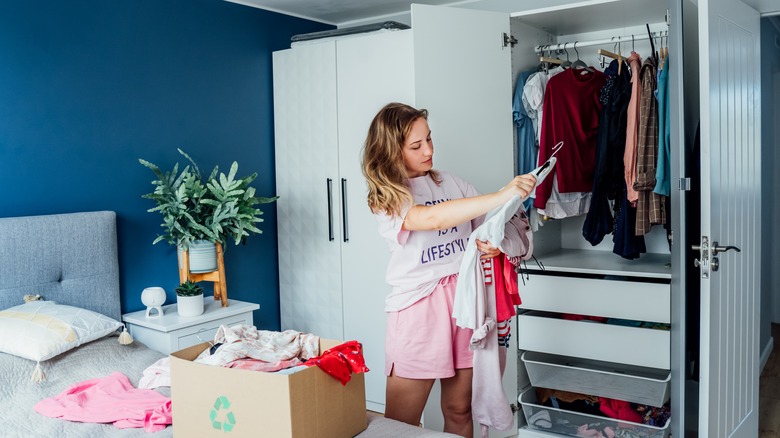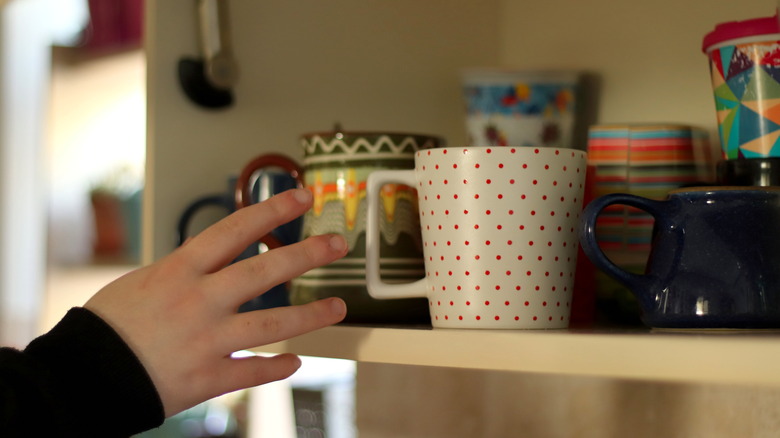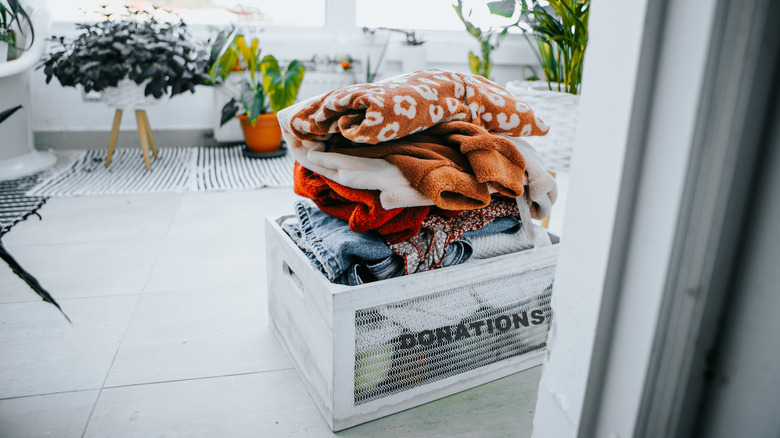You're Decluttering Your Messy Home All Wrong: Here Are The Items To Save For Last
Decluttering is overwhelming, and not just because of the task itself, but because there are a million and one different ways to do it and everyone swears their method is the best. Should you set a timer, ditch your "keep" box, declutter backward, or something else entirely? The good news is that there's no one right way to declutter — whatever works best for you is what you should stick with. That being said, there's one tip our cleaning expert Jon Cronin, founder of Glimmer Cleaning, Co., exclusively told HouseDigest that works for pretty much any decluttering method: Set aside the items you use most and save them to tackle last.
Being in the thick of decluttering can be frustrating. It looks messy, nothing is where you expect it to be, and you have to keep moving items around to get to the things you need. To make this less stressful, don't declutter everything at once. "I'd recommend leaving items that you use frequently until later in the decluttering process," Cronin said. Read on to learn more about his expert approach and why you should implement it yourself.
Why you should declutter your MVPs last
Items that fall into the frequently used category — or what Jon Cronin calls "MVPs (most valuable pieces)" — include anything that you use daily. "Think about those everyday essentials like kitchen gadgets, favorite mugs, or your go-to stationery," Cronin exclusively told HouseDigest. "These are the things that make your daily life easier and more enjoyable, so they deserve a thoughtful approach."
If you try to include these items in the decluttering process too early, Cronin added, you could "disrupt your daily routine and create unnecessary chaos." And since motivation is half of the battle with decluttering, anything that makes your life harder is to be avoided. "Plus, having them handy throughout the decluttering process makes it easier to stay organized and focused," Cronin pointed out.
Instead, work on decluttering non-essential items first — those things that you only use rarely, or that you forgot you even owned. After you're done tackling these items, you'll likely have freed up a fair amount of space and refreshed your organizing systems. This makes it much easier to then start working on your essentials.
What to do with essentials while decluttering
The decluttering process can require a fair bit of shuffling around, so it helps to create some temporary order in the chaos. In this case, that means finding a safe nook for your daily essentials. "Once you've identified your frequently used items, find a temporary home for them outside the area you're decluttering," Jon Cronin exclusively told HouseDigest. "It could be a nearby shelf, a dedicated box, or even a designated corner in the room. Keeping them accessible, yet out of the way, ensures they won't hinder your progress as you tackle other cluttered spaces."
When it's time to declutter your essentials, you might end up focusing more on storage and organization than on getting rid of things — which is just as important. Cronin notes that decluttering is about creating functional systems, not just tidying up. "It's about finding practical spots for everyday items, so that organizing becomes a natural part of your routine," he said. "This proactive approach sets you up for success, keeping your space tidy and stress-free over time."


